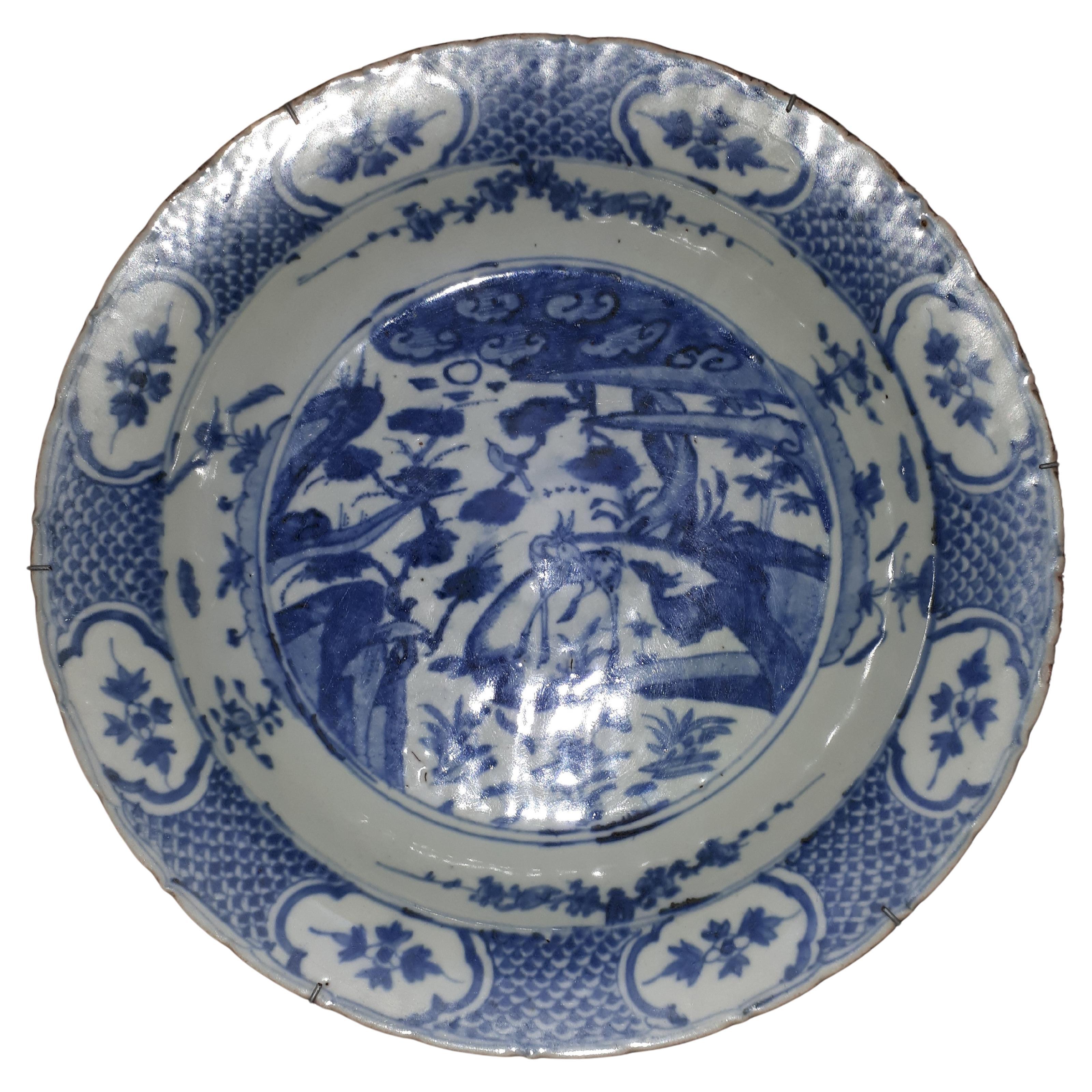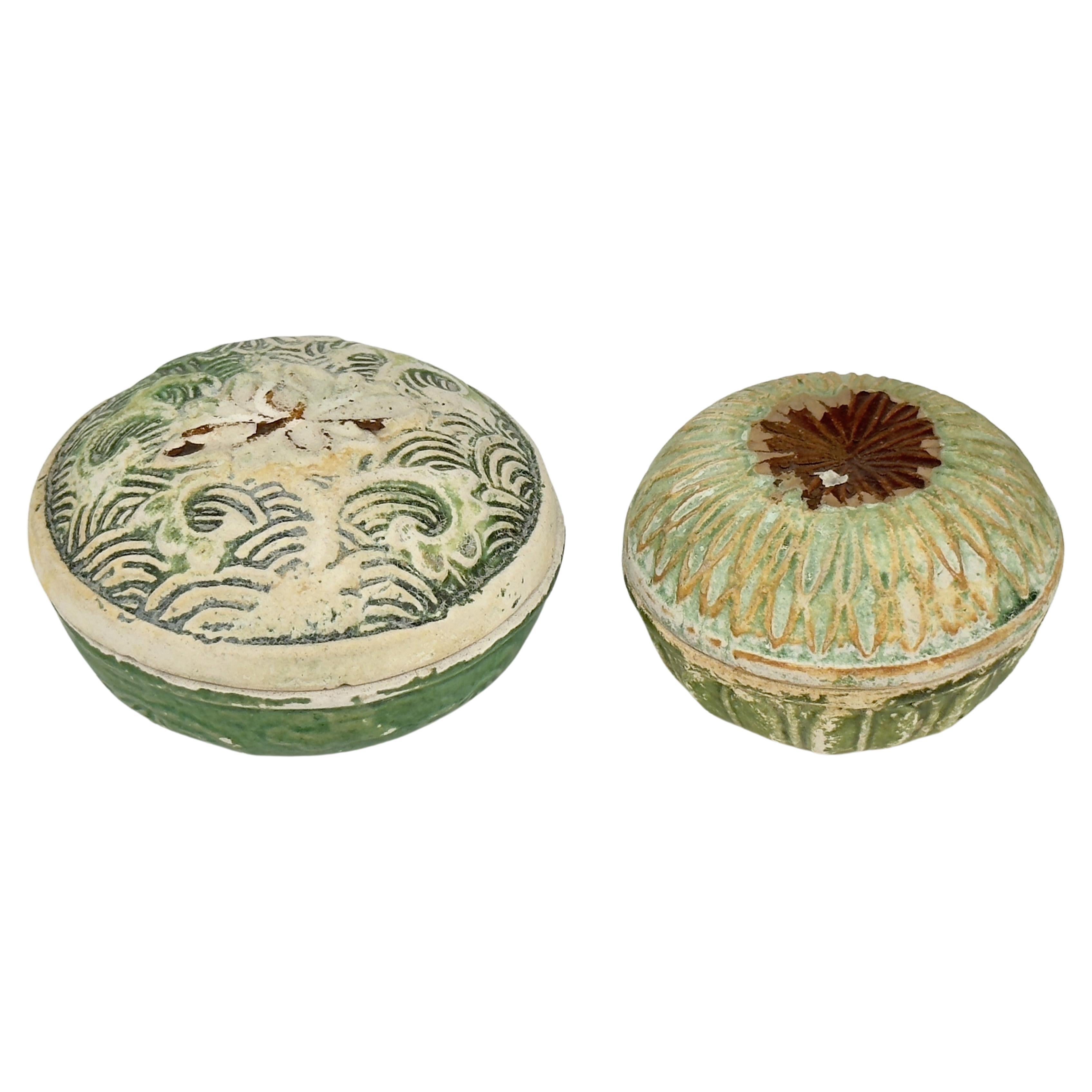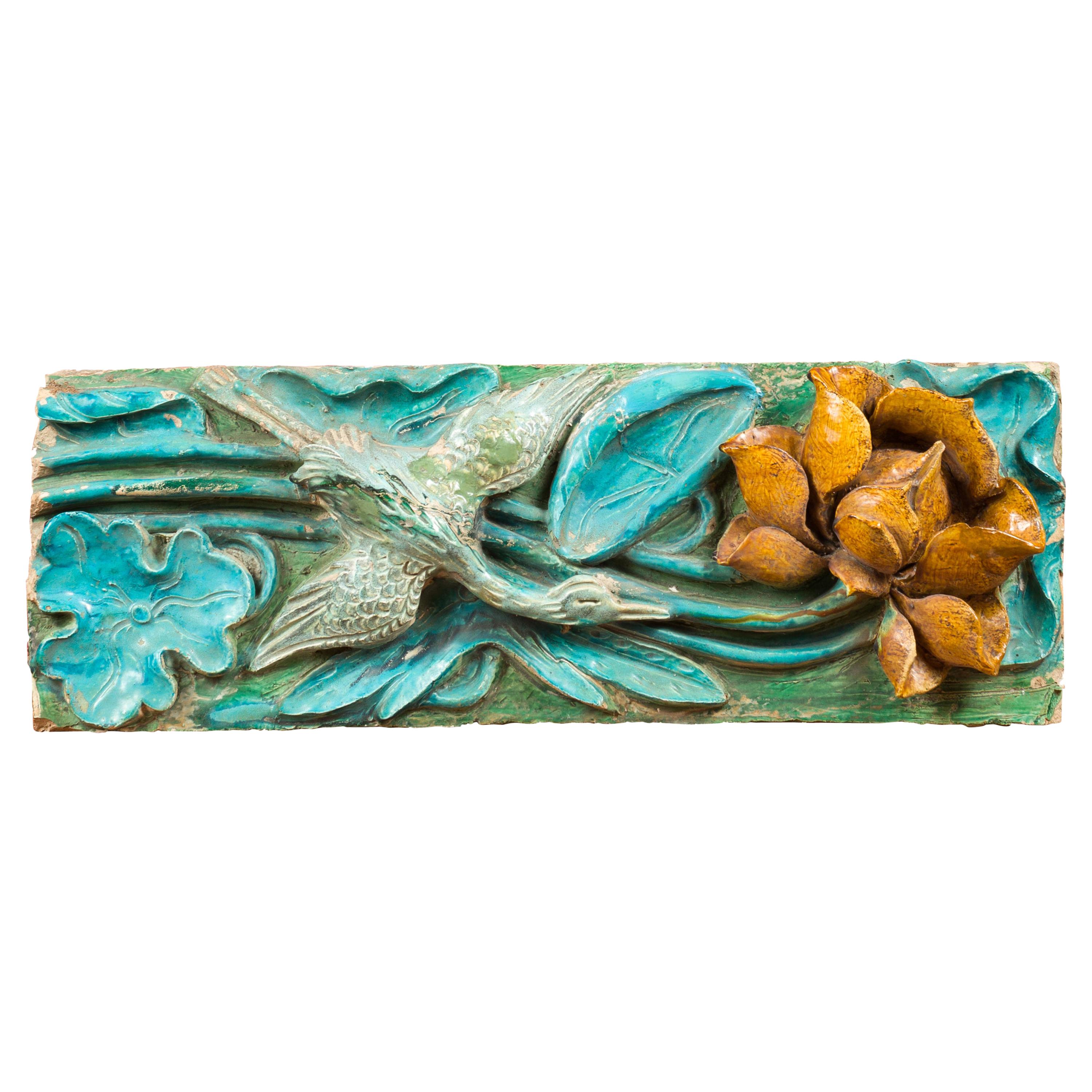Items Similar to Chinese Swatow Blue and White Ceramic Dish, Late Ming Dynasty
Want more images or videos?
Request additional images or videos from the seller
1 of 11
Chinese Swatow Blue and White Ceramic Dish, Late Ming Dynasty
About the Item
Famous late ming dynasty chinese blue and white porcelain plate, double phoenix, from the shipwrecked binh thuan
Period: Ming Dynasty (1368-1644)
Region: Jingdezhen, China
Type: Blue and White Porcelain
Size : 5.5 cm / 27.0cm
Reference :
1) Christie's Melbourne, 2004 - The Binh Thuan Shipwreck, auction sale catalogue
2) Asian Ceramic Found along Maritime Silk Route by The National Museum of Vietnamese History
* Binh Thuan ship
The Binh Thuan shipwreck was discovered in 2001 near the province of Binh Thuan, Vietnam. It is the remains of a late 17th-century Chinese merchant ship that was carrying a variety of trade goods, predominantly Chinese blue and white porcelain, along the Southeast Asian trade routes.
At the time of discovery, the ship held a large quantity of ceramics, along with wooden, metal artifacts, and other trade items, most of which were well-preserved. The porcelain recovered from the Binh Thuan shipwreck demonstrates exquisite craftsmanship and provides insight into the production techniques and aesthetics of Chinese porcelain at the time, as well as the trade relationships between China and Southeast Asia.
This find has made significant contributions to the fields of maritime archaeology, history, and the study of trade routes. The artifacts from the Binh Thuan shipwreck are now displayed in various museums and by private collectors, serving as valuable resources for studying the art and culture of the late Ming Dynasty.
About the Seller
New to 1stDibs
Joined in the past six months.
4.5
Vetted Seller
These experienced sellers undergo a comprehensive evaluation by our team of in-house experts.
Established in 1999
1stDibs seller since 2023
Typical response time: 1 hour
- ShippingRetrieving quote...Ships From: seoul, Korea South
- Return PolicyA return for this item may be initiated within 10 days of delivery.
More From This SellerView All
- Moulded Goldfish Blue and White Dishes, Ming DynastyLocated in seoul, KRExquisitely decorated set of plates, dating back to around 1500, from the Hongzhi or Zhengde period. Intricately adorned with a raised, moulded goldfish design. The goldfish, painted in a orange-red enamel, are set amidst water plants depicted in rich cobalt blue. These plates enjoyed widespread popularity, not only in the local markets of China but also overseas in countries. This style of plate played a significant role in the daily life of the Sengoku period in Japan, as evidenced by several similar flat bowls excavated from the Ichijodani Asakura Ruins in Fukui Prefecture, Japan, along with other ceramic artifacts...Category
Antique 16th Century Chinese Ming Antiquities
MaterialsCeramic
- Swatow Lidded Boxes in the shape of Waves and Flowers, Late Ming Era(16-17th c)Located in seoul, KRSmall green-glazed boxes from the late Ming dynasty cargo. Identical pieces are included on page 142, 143 of the Bin Thuan catalog titled 'The Age of Discovery: Asian Ceramics Found ...Category
Antique 16th Century Chinese Ming Antiquities
MaterialsCeramic, Pottery
- Longquan Celadon Figurine, Ming Dynasty (1368-1644)Located in seoul, KRThis sculpture is a Longquan celadon from the Ming Dynasty, renowned for its rich and jade-like green glaze. The figurine is likely a representation of a Buddhist deity or a revered scholar, showcasing the calm aesthetic expressions and graceful contours prevalent during the era. The spectrum of celadon glaze ranges from a dense grey stoneware to a nearly white porcelain texture, with unglazed parts revealing a terracotta brown upon firing. Such pieces were often part of household altars, reflecting the era's spiritual devotion. This artifact would be a treasured exhibit in any museum's Asian art collection, symbolizing both religious reverence and artistic excellence. Period: Ming Dynasty (1368-1644) Region: Longquan, China Medium: Stoneware - Celadon glazed, with a range from heavy grey to almost white porcelain-like material Type: Sculpture Height : 24.5 cm Provenance : Acquired in 1999, Hongkong * Ming Dynasty Longquan Celadon Longquan celadon from the Ming Dynasty typically exhibits a more robust and heavier stoneware body compared to its Song Dynasty predecessors. The Ming era saw an evolution in celadon glaze, achieving a wider spectrum of green hues, from olive to bluish-greens. Ming celadons...Category
Antique 15th Century and Earlier Chinese Ming Antiquities
MaterialsCeladon
- 'Lotus' Pattern Blue and White Dish c. 1725, Qing Dynasty, Yongzheng EraLocated in seoul, KRWith radiating lotus-petal 8 panels painted with single flowers among tightly-scrolling tendrils within a border of foliage. The number 8 in Chinese culture is associated with pros...Category
Antique 1720s Chinese Chinoiserie Antiquities
MaterialsCeramic
- Carved 'Longquan' Celadon-Glazed Tripod Censer, Ming dynastyLocated in seoul, KRThis censer is characterized by its tripod form, which means it stands on three feet. Incense burners from the Ming dynasty are often highly regarded for their craftsmanship and the quality of the glaze texture and coloration. This piece features finely carved patterns that likely draw inspiration from traditional Chinese motifs. Such items were commonly used for burning incense and sometimes served as significant decorative pieces in ceremonial spaces or the homes of the elite. Period: Ming Dynasty (1368~1644) Region: Longquan, China Medium: Stoneware - Celadon glazed Type: Tripod censer Size : 24.2 cm(Diameter) , 10.8cm(Height) Provenance : Acquired in 1999, Hongkong Reference : Sotheby's Newyork 26 September 2023 - CHINA / 5000 YEARS - Lot1135 * Ming Dynasty Longquan Celadon Longquan celadon from the Ming Dynasty typically exhibits a more robust and heavier stoneware body compared to its Song Dynasty predecessors. The Ming era saw an evolution in celadon glaze, achieving a wider spectrum of green hues, from olive to bluish-greens. Ming celadons...Category
Antique 15th Century and Earlier Chinese Ming Antiquities
MaterialsCeladon
- Chinese Famille Rose/Verte 'Fish' Dish, Qing DynastyLocated in seoul, KRDuring the Qing Dynasty, depictions of fish on ceramics carried several symbolic meanings. Fish are traditionally associated with abundance and prosperity in Chinese culture. The wor...Category
Antique 17th Century Chinese Qing Antiquities
MaterialsCeramic, Porcelain
You May Also Like
- Large Chinese Blue And White Dish, China Ming DynastyLocated in Saverne, Grand EstLarge scalloped dish called "Swatow" in porcelain with flared rim, with underglaze blue decoration : the basin decorated with deers in a landscape, the descent decorated with prunus ...Category
Antique 17th Century Chinese Ming Ceramics
MaterialsPorcelain
- Ming Dynasty Chinese Countryside Villa - TL TestedLocated in San Pedro Garza Garcia, Nuevo LeonExtremely rare Chinese model of a countryside villa for the royal courtiers and ministries of the Ming Dynasty -1368-1644 AD- showing three guest houses and one main entry. The villa is surrounded by a cuadrangular wall painted with bucolic scenes of garden, mountains, and bamboo forests. The roof tiles are glazed in green enamel with yellow finials – as the ones in the forbidden city – typical from the Ming epoch. Truly a museum piece. The doors swivel and are painted in ochre. State of preservation: impeccable mint condition with original paintings, all of the original parts are complete, except for one house which is missing part of the plinth (broken during transport). Each part has been tested for authenticity, consisting of eight separate TL tests...Category
Antique 15th Century and Earlier Chinese Ming Antiquities
MaterialsTerracotta
- Chinese Antique Gourd-Shaped Blue and White Porcelain Vase, Ming PeriodLocated in Chuo-ku, TokyoThe bottom sign tells this vase was made in the era of Xuande emperor. The characteristic Arabic pattern is Influenced by the Silk Road trade in Ming p...Category
Antique 17th Century Chinese Ming Antiquities
MaterialsEarthenware
- Chinese Ming Dynasty Period Ancient Turquoise Roof Tile with Crane and FlowerLocated in Yonkers, NYA Chinese Ming Dynasty period ancient roof tile with turquoise finish, crane and flower. Created in China during the Ming Dynasty (1368-1644), this ancient roof tile features a turqu...Category
Antique 15th Century and Earlier Chinese Ming Antiquities
MaterialsCeramic
- Chinese Ming Dynasty Period Ancient Turquoise Roof Tile with Crane and FlowerLocated in Yonkers, NYA Chinese Ming dynasty period ancient roof tile with turquoise finish, crane and flower. Created in China during the Ming dynasty (1368-1644), this ancient roof tile features a turqu...Category
Antique 16th Century Chinese Ming Antiquities
MaterialsCeramic
- Antique Bronze Chinese Foo Lion Incense Burner - Marked Ming DynastyLocated in Newmanstown, PAAntique Bronze Chinese Foo Lion Incense Burner - Marked Ming Dynasty - H 6" x W 3" x L 6"Category
Antique 16th Century Chinese Ming Antiquities
MaterialsBronze
Recently Viewed
View AllMore Ways To Browse
Chinese Painted Pottery Cocoon Jar
Gau Box
Wood Carved 17th C Monks
Nephrite Jade Censer
Chinese Dynasty Pottery
German Art Nouveau Furniture
Red Table Glass
Century Aluminum Outdoor
Vintage Mid Century Modern Italian Chandeliers
Wall Sconces 1950 Mid Century Modern
Dimmer Switch
German Silver Nouveau
Viewing Cabinet
Dark Red Carpet
Flatweave Hand Woven
Marble Midcentury Dining Table
Wall Rug Tapestry
H H Sterling





